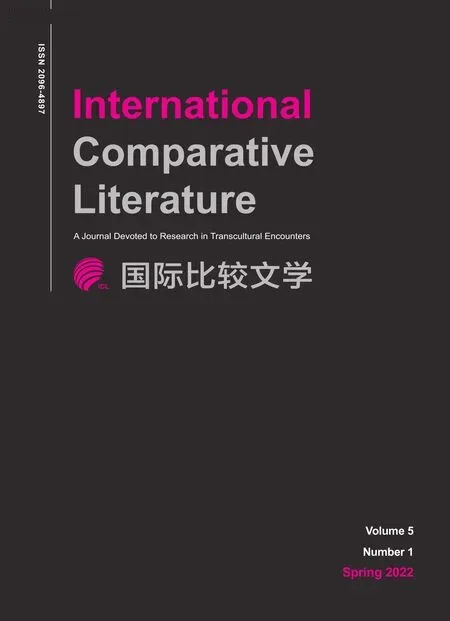Voci,Paola.China on Video:Small-Screen Realities
Today,our cultural production is increasingly seized by small-screen representations that we call the phenomenon of短视频(short-videos).Paola Voci’s(2010)is a comprehensive work done to analyze the emerging field of in‐dependent Chinese video-making practices,foreshadowing the coming of the age of short-videos.This phenomenon is marked by the formation of a new public space consisting of small screens such as“the DV cam‐era,the computer monitor,cell phone display”(xx).Paola Voci ap‐proaches these diverse visual practices with an interdisciplinary method that covers“film,media,new media,media anthropology,visual arts,contemporaryChinaareastudies,andculturalstudies”(xx).Byintroduc‐ingas a central feature of this new type of visual practice,Voci argues that“smaller-screen movie-making and -viewing practices”ex‐pands“the symbolic value of cinematic images”in which they define and negotiate social meanings in post-socialist China(xxiv).I maintain that this book’s choice of primary texts has been comprehensive,yet this diversity results in a lack of depth into specific genre-analysis,and sometimes the primary text falls out of the notion of lightnessVoci has construed for smaller-screen visual practices.
At the very foundation of the book is a tension set between the official-endorsed,silver-screen,legitimate-culture type visual practices and the unendorsed,independent, unofficial,and unendorsable ones.While emphasizing the heavy culturalweight the first type of visual practices carries,Voci characterizes the second type as being light.Voci defines lightness“as a marker of these movies’small production costs,distribution ambitions,economic impact,limited audiences,quick and volatile circulations,and resistance to being framed into and validated by either market,art,or political discourses”(13).Throughout the book,the analysis of lightness of the smaller-screen visual practices is conveyed with a reference to the silver-screen visual practices.Furthermore,Voci notes that smaller-screen videos’are in constant communication and negotiationwith the silver-screen visual practices.
This book is organized into nine chapters.The first chapter details the different types of visual practices covered by the term“smaller-screen realities”and the denotations of,laying the foundation of the whole book.In the following chapters,each respectively examines a different type of smaller-screen reality.The second chapter looks at documentary video-making and ac‐counts for artists’trajectories to fame,demonstrating the porosity and fluidity betweenvisu‐al practices and legitimate culture.The third chapter explores Chinese-made animation that aims for“a more indigenous and distinctive style”(19).The fourth and fifth chapters examine non-pro‐fessional,amateur online movies(:mobile phone movies;and web spoofs:movies)that are defined by portability,pointing out the relative freedom they share,since the censorship filters mostly work on words.Chapters six and seven analyze movies“that directly set out to record and comment upon local,national,and international events”(19).Chapter eight views smallerscreen movies as“an extension of the cinematic experience”(19)and considers“how cinema looks at smaller-screen realities and how it has been affected by them”while“rethink[ing]film in the con‐text of digital cinema”(19).
This book’s main contributions lie in two aspects.First,with the umbrella term“smallerscreen realities,”this book achieves a comprehensive examination of various visual practices out‐side of mainstream circulation.These visual practices are produced,transmitted,and watched on smaller screens such as cell phones and computers that open the door to a new terrain of visual study in China.Second,the introduction of the concept ofto theorize the features of independentvideo-making practices enables and invitesmore upcoming analysis.
Undoubtedly,this book is rich in its research.However,due to the diversity of the kind of vi‐sual practices the book tries to deal with,it lacks in-depth analysis of the uniqueness of the genre andform,andinsteademphasizestheaspectofit.Genre-wise,thisbookcoversnotonlyinde‐pendent documentaries,but also fast-consumed videos such asvideos,,and anima‐tions.Technologically,this book covers videos made by DV cameras,computers,and mobile phones.The only common feature that links these together is that they function on smaller screens and present a China other than the official unified one.Distinctively,each type is defined by their particular and specific manner of production.In order to theorize this emerging field of smallerscreen realities,this book touches upon each of them,yet due to the limited scope of the one-vol‐ume book it is unable to go further.Therefore,this book sets the founding stage for upcoming focusedstudies of each type of visual practice.
In chapter seven,while analyzing two visual projects individually initiated by filmmakers WuWenguang 吴文光(1956-)and Ou Ning 欧宁(1969-)with theaim ofempowering thesubal‐tern,it points out the intersection between legitimate culture andvideos,and the reliance of the subaltern on intellectuals.From Voci’s point of view,the ICT(Information and Communica‐tionTechnology)have-less rely on the involvement of intellectuals to be empowered.This reliance is shown through the training of technology-use and other necessary skills such as editing and se‐curing financial support.In the end,the voices of the ICT have-less are brought to the silver screen and gain cultural weight,and are thus“empowered.”Precisely,“empowerment”refers to the pub‐lic recognition of the subaltern’s voice from the mainstream.This definition goes against the notion ofas bearing“‘insignificant’weight in terms of production costs,distribution size,profit gains,intellectual or artistic ambitions”(13).To conclude,with intellectuals trying so hard to“em‐power”the subaltern,the rise of short-video apps such asandTikTok might have done a much better job enabling ordinary people to record their own daily lives or even form narratives.There‐fore,there is no necessary reliance of the subaltern on the involvement of intellectuals;access to educational and cultural resources,necessary technological tools,and publishing venues might be key to help the subaltern speak for themselves,of themselves,and most important of all,by them‐selves.

